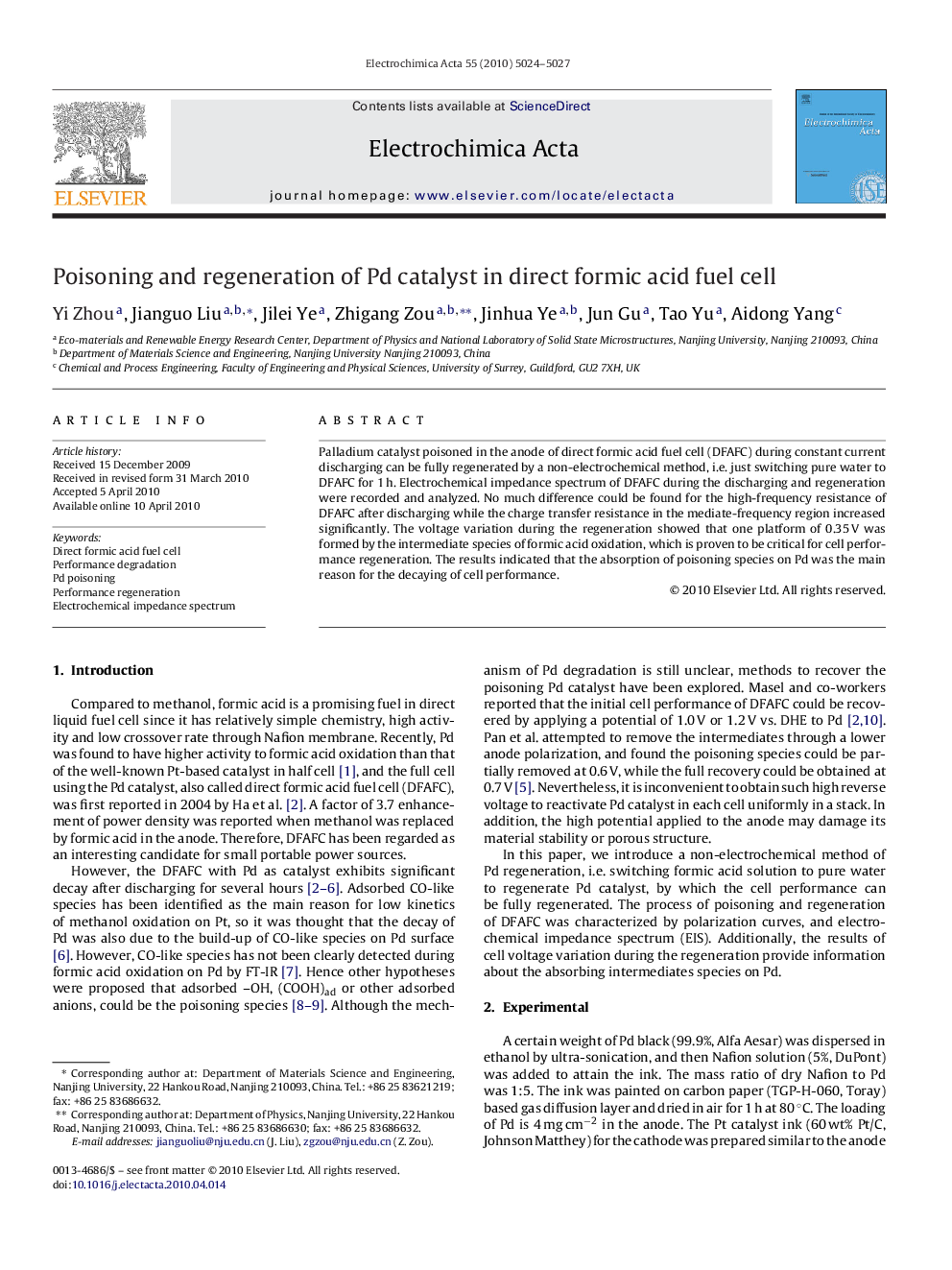| Article ID | Journal | Published Year | Pages | File Type |
|---|---|---|---|---|
| 190581 | Electrochimica Acta | 2010 | 4 Pages |
Palladium catalyst poisoned in the anode of direct formic acid fuel cell (DFAFC) during constant current discharging can be fully regenerated by a non-electrochemical method, i.e. just switching pure water to DFAFC for 1 h. Electrochemical impedance spectrum of DFAFC during the discharging and regeneration were recorded and analyzed. No much difference could be found for the high-frequency resistance of DFAFC after discharging while the charge transfer resistance in the mediate-frequency region increased significantly. The voltage variation during the regeneration showed that one platform of 0.35 V was formed by the intermediate species of formic acid oxidation, which is proven to be critical for cell performance regeneration. The results indicated that the absorption of poisoning species on Pd was the main reason for the decaying of cell performance.
